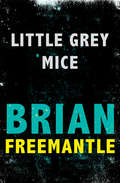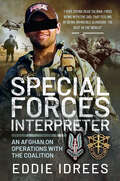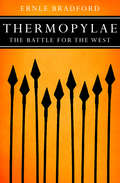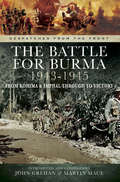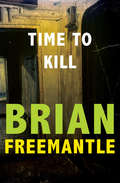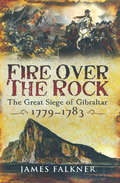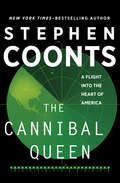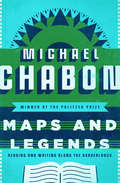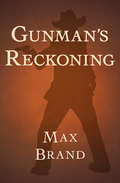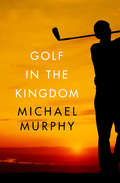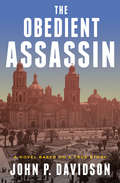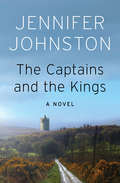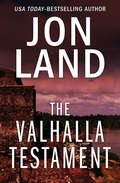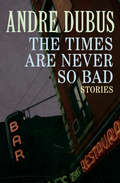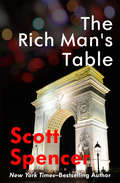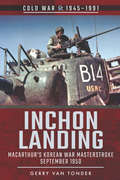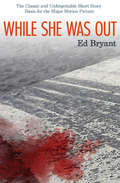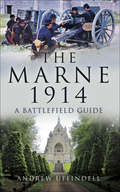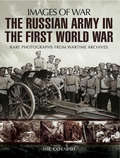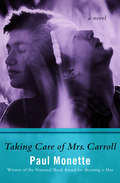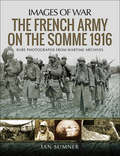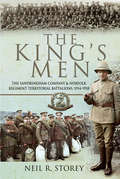- Table View
- List View
Little Grey Mice
by Brian FreemantleAn East German agent uses seduction to spy on the WestElke has long led a quiet life, dedicated to her job as an assistant to an important official in the West German government. But beneath her plain exterior is a deep insecurity, born of the pains of caring for her autistic child—the result of a long-ago romance that was her life&’s sole moment of passion. And then she meets Otto. Tall, handsome, and suave, he is every woman&’s dream, and the interest he takes in her seems impossible—because it&’s all a lie. Otto is a spy, sent from the East German Stasi to gain a last advantage in the impending reunification of the divided country. His real target is not Elke but the state secrets to which she has access. When Elke accidentally discovers his deceit, the &“little grey mouse&” reveals a taste for revenge. This ebook features an illustrated biography of Brian Freemantle including rare photos from the author&’s personal collection.
Special Forces Interpreter: An Afghan on Operations with the Coalition
by Eddie IdreesThe first memoir of an Afghan interpreter with the Coalition who served with both US Special Forces and the SAS over an eight year period.Eddie Idrees, a pseudonym for security reasons, has a fascinating and inspiring story to tell. Born in Afghanistan, he spent time as a refugee in Pakistan during the civil war dreaming of serving with the military. As this unique memoir reveals, his wishes came true in spades. For eight years from 2004, Eddie worked as an interpreter with, first, American Special Forces before moving across to the Special Air Service. A veteran of over 500 operations, he describes the most notable ones including breaking into a Taliban prison to free prisoners about to be executed. He was the first Afghan interpreter to parachute in with the SAS. His aim in writing his story is to explain the interpreter’s role and contribution and the challenges and threats they faced, not just from the Taliban. For all the media attention, these have never been fully understood. Eddie concludes by describing his experiences and emotions on leaving his fractured and politically corrupt homeland and making a new life in the United Kingdom. Special Forces Interpreter demands to be read and not just for its vivid and thrilling descriptions of Special Forces’ operations.
Thermopylae: The Battle for the West
by Ernle BradfordAn account of the ancient battle between Persia and the alliance of Greek city-states, including the legendary &“300 Spartans.&” In 480 BCE, Persian king Xerxes led a massive invasion of Greece. A critical point in this invasion was the battle for the pass at Thermopylae—&“Hot Gates&” in Greek. Xerxes had amassed one of the largest armies yet known to man, while Leonidas&’s troops, a group of united Spartans, Thespians, Thebans, and others, including slaves, were a small fraction of the Persian horde. Despite the overwhelming odds, Leonidas and his men stood their ground for three days in a historic display of patriotism and courage. In Thermopylae: Battle for the West, acclaimed author Ernle Bradford covers the entire era of the invasion—from the foundation of the Persian empire to the accession of Darius all the way to the final, bloody battles—in a fascinating and accessible look at warfare in ancient times.
The Battle for Burma, 1943–1945: From Kohima & Imphal Through to Victory (Despatches from the Front)
by Martin Mace John GrehanDespatches in this volume include that on operations in Burma and North-East India between November 1943 and June 1944, by General Sir George J. Giffard; the despatch on operations in Assam and Burma between June 1944 June and November 1944, by General Sir George J. Giffard, Commander-in-Chief; the despatch on Naval operations in the Ramree Island area (Burma) in January and February 1945 by Vice-Admiral Sir Arthur J. Power, Commander-in-Chief, East Indies Station; and the despatch on operations in Burma between November 1944 and August 1945 by Lieutenant-General Sir Oliver Leese.This unique collection of original documents will prove to be an invaluable resource for historians, students and all those interested in what was one of the most significant periods in British military history.
Time to Kill
by Brian FreemantleAfter fifteen years in prison, a disgraced spy hunts down the man who put him awayJack Mason is ready to kill. For fifteen years he has plotted revenge from his prison cell. He has exercised daily, keeping his body and mind fit, and learned all he could about computers, so that he can finally manipulate them at will. He will need to use all his mental powers to find Sobell, then merciless strength to kill him. An ex-CIA agent, Mason was jailed for spying on his country for the Russians. Sobell was the KGB colonel who recruited him and, when the scheme turned sour, sold him out. He is hidden somewhere in the United States, with a new identity courtesy of Witness Protection, and a mistress in the form of Jack&’s ex-wife. When Jack gets out of prison, he&’s going to take them both down—no matter what the cost. This ebook features an illustrated biography of Brian Freemantle including rare photos from the author&’s personal collection.
Fire Over the Rock: The Great Siege of Gibraltar, 1779–1783
by James Falkner&“This book does a wonderful job in describing a portion of [the Rock of Gibraltar&’s] history during the Napoleonic Wars&” (The Past in Review). The great siege of Gibraltar was the longest recorded in the annals of the British army. Between 1779 and 1783, a small British force defended the Rock against the Spanish and the French who were determined take this strategically vital point guarding the entrance to the Mediterranean. The tenacity and endurance shown by the attackers and defenders alike, and the sheer ingenuity of the siege operations mounted by both sides, make the episode an epic of military history, and the story gives us a fascinating insight into the realities of siege warfare. In this, the first full study of the siege for over forty years, James Falkner draws on a wide range of contemporary sources to tell the exciting tale of a huge and complex operation.
The Cannibal Queen: A Flight Into the Heart of America
by Stephen CoontsThe New York Times–bestselling icon of the techno-aviation thriller takes to the skies in this memoir of a great American adventure in an open-cockpit biplane. It was a bird&’s-eye view of America—and the trip of a lifetime for author Stephen Coonts and his fourteen-year-old son. But even for Coonts, who had clocked 1,600 hours as a naval aviator and was the recipient of the Distinguished Flying Cross commendation, this was a first. He&’d be flying closer to the earth than he ever had before. His big yellow wood-and-canvas bird was the Cannibal Queen, a Stearman open-cockpit biplane built in 1942. Destined for the scrap yard, it was rescued and restored for what Coonts would call his &“Stearman summer.&” On a clear June afternoon in 1991, Coonts and his son took off to see the country the same way the barnstormers flew their Jennys: with a map and a compass. Coonts followed highways, railroad lines, back roads, mountains, rivers, and landmarks. For the next three months, seeing old friends and meeting new ones, he touched down on the diverse landscapes of each of the forty-eight contiguous states to record the stories of the American countryside, its spirited people, and its rich history. Soaring from big cities to the heartland, experiencing everything from Bourbon Street jazz and small-town barbershop quartets to greasy spoons and backyard barbeques, the author of Flight of the Intruder and The Art of War captures not only the singular thrill of biplane aviation, but a nostalgia for the simple pleasures of an America thought lost and forgotten. Stephen Coonts found it, and in The Cannibal Queen he shares every exultant moment. This ebook features an illustrated biography of Stephen Coonts, including rare photos from the author&’s personal collection.
The Boyfriend from Hell: A Novel
by Avery CormanVeronica Delaney didn&’t intend to fall for another bad guy, especially not one who just might be evil incarnate . . .Veronica Delaney is a bright and beautiful, young New York journalist who has had hard luck romantically and professionally. Her latest boyfriend left her for fame (and another woman, of course), and her latest assignment has her covering a bizarre satanic cult. But while following the story, Veronica soon meets the charming, polite, and devilishly handsome occult historian Richard Smith. Soon she&’s embroiled in an exciting affair—at least until strange relics begin to appear on her doorstep and things start to go terribly wrong. The Boyfriend from Hell is a funny, astute psychological thriller about the mysteries of attraction and love&’s power to hijack our good sense. This ebook features an illustrated biography of Avery Corman including rare images from the author&’s personal collection.
Maps and Legends: Reading and Writing Along the Borderlands (P. S. Series)
by Michael ChabonThe Pulitzer Prize winner explores the literary joys of sci-fi and superheroes, gumshoes and goblins, and the stories that bring us together. &“I read for entertainment, and I write to entertain. Period.&” Such is the manifesto of Michael Chabon, an author of indisputable literary renown who maintains a fierce appreciation of the seductive arts of so-called &“genre&” fiction. In this lively collection of sixteen critical and personal essays, the author of The Amazing Adventures of Kavalier & Clay champions the cause of westerns, horror, and all the stories, comics, and pulp fiction that get pushed aside when literary discussion turns serious. Whether he&’s taking up Superman or Sherlock Holmes, Poe or Proust, Chabon makes it his emphatic mission to explore the reasons we tell one another tales. Throughout, Chabon reveals his own blooming as a writer, from The Mysteries of Pittsburgh to The Yiddish Policeman&’s Union. He is living proof of his theory that the stories that give us great pleasure are in many ways our truest, best art—the building blocks of our shared imagination—and in Maps and Legends, he &“makes an inviting case for bridging the gap between popular and literary writing&” (O, The Oprah Magazine). This ebook features a biography of the author.
Gunman's Reckoning: ( Annotated )
by Max BrandA gunman agrees to do a rich man&’s dirty work in this classic Western from one of the genre&’s early mastersDonnegan is not proud of his past. But when words ran dry and matters could only be settled with a gun, he never hesitated to make things right. Now fate has led him to The Corner, a wide-open gold-mining town in the valley where two rivers join. An invalid by the name of Colonel Macon wants Donnegan to settle a long-standing land claim that&’s been taken over by outlaws. Charmed by the colonel&’s beautiful daughter, the gunman agrees. But nothing is as it seems in The Corner, where the line separating good from evil is so badly blurred it might not be there at all. A contemporary of Zane Grey and a major influence on Louis L&’Amour, Max Brand was a true master of the Western. Gunman&’s Reckoning is a fine example of the moral complexity, fluid prose, and nonstop action that defines the best of his work. This ebook has been professionally proofread to ensure accuracy and readability on all devices.
Golf in the Kingdom (Compass Ser.)
by Michael MurphyA spiritual journey, a lush travelogue, a parable of sports and philosophy—John Updike called this unique novel &“a golf classic if any exists in our day.&” When an American traveler on his way to India stops to play a round on one of the most beautiful and legendary golf courses in Scotland, he doesn&’t know that his game—and his life—are about to change forever. He is introduced to Shivas Irons, a mysterious golf pro whose sublime insights stick with him long after the eighteenth hole. From the first swing of the Scotsman&’s club, he realizes he is in for a most extraordinary day. By turns comic, existential, and semiautobiographical, Michael Murphy&’s tale traces the arc of twenty-four hours, from a round of golf on the Links of Burningbush to a night fueled by whiskey, wisdom, and wandering—even a sighting of Seamus MacDuff, the holy man who haunts the hole they call Lucifer&’s Rug. &“Murphy&’s book is going to alter many visions,&” The New York Times Book Review declared. More than an unforgettable approach to one of the world&’s most popular sports, Golf in the Kingdom is a meditation on the power of a game to transform the self.
The Total Outdoorsman Skills & Tools: 324 Tips (Field & Stream)
by T. Edward Nickens The Editors of Field & StreamThe editor-at-large of Field & Stream guides you through the skills and tools you need to be a better outdoorsman and be ready for anything. KNOW IT ALL What makes someone a total outdoorsman? It&’s a mix of know-how, enthusiasm, experience…and having the right tools. In this follow-up to the top-selling Total Outdoorsman Manual author T. Edward Nickens returns with another 300+ hints on how to get the most from your hunting, fishing, and camping trips…and how to survive if something goes wrong. CAMP IN STYLE What do you really need to bring along to sleep comfortably, keep away varmints, set up an amazing camp kitchen, and handle on-the-spot butchering? Eddie knows, and shares in detail. HUNT BETTER The skills and tools you need track your prey, make the toughest shots, master bowhunting and knife skills, and haul, butcher, and cook wild game. FISH SMARTER Everything you need to master fly fishing, baitcasting, and spinning, as well as surefire ways to get the most out of your motorboat, canoe, or kayak whether you&’re fishing on a shoestring budget or investing in a dream trip. SURVIVE ANYTHING When the chips are down and help is far away, these are the skills that can save your life, and the tools that will get you out of any wilderness situation safely.
The Obedient Assassin: A Novel Based on a True Story
by John P. DavidsonA dark and riveting thriller that reimagines the life and mission of the Spanish nationalist enlisted to murder Leon Trotsky: Based on a true chapter of world history and ten years of research, here is the story of the real-life reluctant soldier and killer, Ramón Mercader—the obedient assassinRamón Mercader was plucked from the front of the Spanish Civil War by the Soviets and conscripted to murder the great intellectual Leon Trotsky, a leader of the Bolshevik Revolution who was exiled in the 1920s for opposing Joseph Stalin.As Ramón is trained for the task and assumes a new identity, he lives a lush life in Paris, befriending Frida Kahlo and other artists of the time. He falls in love with a left-leaning Jewish woman whom he is ordered to seduce as a means of getting at Trotsky.From Barcelona to Paris and New York to Mexico City, the group controlling Ramón—including Ramón&’s mother and her lover—guides the assassin on the inevitable resolution of his grim task as he must penetrate Trotsky&’s compound.
The Captains and the Kings: A Novel
by Jennifer JohnstonWinner of the Author&’s Club First Novel Award: Alone with melancholic memories of his past, a widower finds new life after striking up a friendship with a village boy In County Wicklow, south of Dublin, Mr. Prendergast lives alone in the Big House of his village. A remnant of the long-gone days of the Anglo-Irish Ascendancy, Prendergast&’s mansion has been witness to many of the most important years of his life, including his childhood, marked by his mother&’s open preference for his older brother, Alexander. Following Alexander&’s death in the First World War, Prendergast traveled the world, returning home decades later to a greatly changed place. Now in the 1970s, his wife and daughter are both gone, leaving the house an empty monument to his isolation and melancholy. But when the young, redheaded Diarmid arrives on Prendergast&’s doorstep, the boy&’s thrill at the house&’s history sparks an unlikely friendship—one that revives in Prendergast a sense of vitality and sets in motion a final, fateful confrontation with the outside world he&’d shunned for so many years.
The Valhalla Testament: The Valhalla Testament, Vortex, And The Doomsday Spiral
by Jon LandImprisoned in Nicaragua, an NFL star must escape to the United States to warn the government of an impending terrorist attack—before the sinister forces of the international intelligence community silence him forever Jamie Skylar is not a political man. His life has always been about football, and that single-minded dedication was justified when, after he finished setting school rushing records at Brown, the New York Giants gave him a lucrative contract to join their crew of bruisers. But more important to him than football is his sister, and she needs him now. An American undercover operative masquerading as a journalist in Central America, Beth has just learned of the Nicaraguan army&’s plans for an attack inside the United States, codenamed Operation Thunder Clap. She invites her brother to visit her, intending to have him smuggle out the government&’s sinister plans. But when she is murdered and Jamie is imprisoned, the running back will need all his strength to escape and warn the United States. This ebook features an illustrated biography of Jon Land including rare photos from the author&’s personal collection.
The Times Are Never So Bad: Stories
by Andre Dubus IIIA classic collection that contains some of the author&’s &“most compelling and suspenseful&” work—including &‘The Pretty Girl&’ and &‘A Father&’s Story&’ (Joyce Carol Oates, The New York Times Book Review). In his fourth collection, Andre Dubus revisits his central themes of infidelity and fallibility, exploring the minds of his characters with unflinching honesty and unfailing compassion. Set in the New England landscape, and populated by the complex, damaged individuals he has come to claim as his own, these stories are ultimately characterized by their extraordinary ordinariness. They are a reverent testament to the passion and sadness of humble lives. Deeply moving and insightful, The Times Are Never So Bad is yet another masterful work by a writer whose Chekhovian sensibilities inform—yet never distract from—his own fully realized perspective. This ebook features an illustrated biography of Andre Dubus including rare photos and never-before-seen documents from the author&’s estate.
The Rich Man's Table
by Scott SpencerA man&’s impassioned search for his legendary rock star father becomes a journey of self-discovery in this masterful novel from bestselling author Scott Spencer Billy Rothschild&’s obsession with legendary &’60s folksinger Luke Fairchild could be considered fanatic, if not for the fact that Luke is actually Billy&’s father. Raised by his beautiful, charismatic, former–flower child mother, Billy is a lost soul. Determined to learn something—anything—about his origins, he sets out on an illuminating quest to find and confront the father he always knew of but never knew.Evocative and lyrical, The Rich Man&’s Table is a moving portrait of a man seeking to connect to a lost past, and to build a new future for himself. This ebook features an illustrated biography of Scott Spencer, including rare photos from the author&’s personal collection.
Inchon Landing: MacArthur's Korean War Masterstroke, September 1950 (Cold War, 1945–1991)
by Gerry van TonderA history of this dramatic and risky amphibious invasion, with photos included. In the previous two volumes in the author&’s series on battles of the Korean War, North Korean ground forces, armor and artillery cross the 38th Parallel into South Korea, inflicting successive ignominious defeats on the ill-prepared US-led UN troops, pushing them ever southward into a tiny defensive enclave—the Pusan Perimeter—on the tip of the Korean Peninsula. The story continues as General Douglas MacArthur, Second World War veteran of the South East Asia and Pacific theaters, meets with considerable resistance to his plans for a counteroffensive, from both Washington and his staff in South Korea and Japan: it is typhoon season, the approaches to the South Korean port city of Inch&’on are not conducive to amphibious assault, and it will leave the besieged Pusan Perimeter in great danger of being overrun. However, the controversial MacArthur&’s obstinate persistence prevails and, with a mere three weeks to go, the US X Corps is activated to execute the invasion on D-Day, September 15, 1950. Elements of the US Marine Corps land successfully on the scheduled day, and with the element of surprise on their side, immediately strike east to Seoul, only fifteen miles away. The next day, General Walker&’s Eighth US Army breaks out of Pusan to complete the southerly envelopment of the North Korean forces. Seoul falls on the 25th. MacArthur&’s impulsive gamble has paid off, and the South Korean government moves back to their capital. The North Koreans have been driven north of the 38th Parallel, effectively bringing to an end their invasion of the south that started on June 25, 1950. With a timeline and photos included, this book tells the compelling story.
While She Was Out
by Ed BryantOn a casual errand, a woman is forced to fight for her life when she is attacked by a group of relentless and evil strangers. Going beyond the pale, Ed Bryant&’s short story is a gripping and fast-paced thriller that is sure to make you think twice about your next trip to the mall. This story is the basis for the 2008 film by the same name, starring Kim Basinger and Lukas Haas.
The Battle of Marne, 1914: A Battlefield Guide
by Andrew UffindellA traveler’s guide to the history and sites of the World War I battle in the Marne River valley in France.The First Battle of the Marne was one of the most pivotal battles in history. Fought outside Paris in September 1914, it turned the tide of the German invasion of France and robbed Kaiser Wilhelm II of his best chance of winning the First World War.The battle began when the French and British armies launched a massive counter-offensive, and it ended—after five, tense days of fluctuating fortunes—in a German retreat. The so-called “miracle of the Marne” was among the most crucial episodes of the war, and yet no complete, in-depth guide to the battlefield has been available until now in English.Andrew Uffindell begins his guidebook with a gripping account of the battle, followed by a series of easy-to-follow tours of the battlefield. Each tour covers a particular sector in detail, using vivid eyewitness accounts to reveal what the fighting was like for the men in the front line.This unique and highly illustrated book enables readers to explore the battlefield and retrace the course of those dramatic events for themselves. It gives directions to dozens of museums, cemeteries, and monuments, including the memorials to the famous “taxis of the Marne.” It will be fascinating reading for anyone interested in the Great War, and an essential companion for visitors keen to see the actual terrain over which the battle was fought.
The Russian Army in the First World War: Rare Photographs From Wartime Archives (Images of War)
by Nik CornishFor 100 years little attention has been paid to the Russian army that fought the Germans and the Austro-Hungarians in the First World War on the Eastern Front. Yet the Tsar's army played a critical part in the global conflict and was engaged in a sequence of shattering campaigns that were waged on a massive scale on several fronts across eastern Europe. Nik Cornish, in this heavily illustrated account, seeks to set the record straight. In a selection of almost 200 archive photographs he gives a graphic impression of the Russian army of the time, of the soldiers and commanders, and of the conditions in which they fought. He describes the key stages in the struggle - the battles of Tannenberg and the Masurian Lakes, the Przemysl siege, the Gorlice-Tarnow and Brusilov offensives and the Romanian and Turkish campaigns.His book is a fascinating photographic record of the army under the Tsar Nicholas II, then under the Provisional Government and the Bolshevik rule that succeeded him. The impact of the Russian revolution is also revealed in the photographs which take the story through from the initial outbreaks of discontent and the abdication of the Tsar to Lenin's take-over and the end of Russia's war - and of the imperial army in 1917.
Taking Care of Mrs. Carroll: A Novel
by Paul MonetteNow that Mrs. Carroll has died, the race for control of her elegant home has begunIt is incredible how the death of a loved one can bring people together. Especially when greedy developers waste no time in attempting to steal the Cape Cod estate of the person in question.Before she could add a stipulation to her will requiring that the house not be bought up and razed for development, Mrs. Carroll tragically passed away. Now, it is up to her lover, Phidias, and her houseboy, David, to take care of the place once again. However, they cannot do it alone. They will need the help of people ranging from David&’s ex-boyfriend Rick to a kitschy former screen goddess.Written not long after Paul Monette moved to Los Angeles, his first novel is a madcap caper featuring a cast of characters willing to do anything to fulfill a dying woman&’s final wish—even if that means impersonating her while hiding her dead body from the nosy lawyers scouring her estate.This ebook features an illustrated biography of Paul Monette including rare images and never-before-seen documents from the Paul Monette papers of the UCLA Library Special Collections.
Tempted Women: The Passions, Perils, and Agonies of Female Infidelity
by Carol BotwinOver the past ten years, the number of wives who have affairs has grown dramatically—recent surveys suggest by as much as 50 percent. Yet in all the acres of space devoted to male infidelity, so far this has been a largely untouched subject. In this guide, Carol Botwin—advice columnist, therapist, and author—rushes to help rather than condemn. Drawing from six hundred interviews and case histories—with both husbands and wives—Botwin examines causes, initial attractions, affairs in progress, endings, and aftermaths. Throughout, she offers her experienced advice and solutions on how to deal with a lover, children, and husband after the affair has dealt a devastating blow to the marriage. Other books by the author include Men Who Can&’t be Faithful and Is There Sex After Marriage?
The French Army on the Somme 1916 (Images of War)
by Ian SumnerSo much has been written about the 1916 Battle of the Somme that it might appear that every aspect of the four-month struggle has been described and analyzed in exhaustive detail. Yet perhaps one aspect has not received the attention it deserves the French sector in the south of the battlefield which is often overshadowed by events in the British sector further north. That is why Ian Sumner's photographic history of the French army on the Somme is so interesting and valuable.Using a selection of over 200 wartime photographs, many of which have not been published before, he follows the entire course of the battle from the French point of view. The photographs show the build-up to the Somme offensive, the logistics involved, the key commanders, the soldiers as they prepared to go into action and the landscape over which the battle took place. Equally close coverage is given to the fighting during each phase of the offensive the initial French advances, the mounting German resistance and the terrible casualties the French incurred.The photographs are especially important in that they record the equipment and weapons that were used, the clothing the men wore and the conditions in which they fought, and they provide us with a visual insight into the realities of battle over a hundred years ago. They also document some of the most famous sites on the battlefield before they were destroyed in the course of the fighting, including villages like Gommecourt, Pozires, La Boiselle and Thiepval.
The King's Men: The Sandringham Company & Norfolk Regiment Territorial Battalions, 1914–1918
by Neil R. Storey&“An absorbing account of the Norfolk Territorials who fought at Gallipoli and created a legend&” from the author of Beating the Nazi Invader (Firetrench). The 4th and 5th Battalions, the Norfolk Regiment were formed in the early days of The Great War as part of the Territorial Force and deployed with 54th (East Anglian) Division to Gallipoli in 1915. Most significantly the 1/5th Battalion was unique in that it contained The Sandringham Company, the only unit to be raised entirely from a Royal Estate. Tragically the Company, along with King George V&’s Agent Captain Beck, disappeared without trace on 12 August 1915, presumed to have been overcome by their Turkish adversaries. The Battalion was rebuilt and saw out the ill-fated Gallipoli Campaign being evacuated to Egypt in December 1915. Thereafter the Norfolks served with distinction in Palestine as part of the Egyptian Expeditionary Force. The author has compiled a fascinating history of these Battalions&’ distinguished service using contemporary records and personal accounts illustrated with a splendid selection of photographs. The result is a fitting tribute to the memory of these brave volunteers.&“Brilliant local (Norfolk) social historian Neil Storey tells the story of the Norfolk Regiment and its campaigns during and after the Great War. Beautifully illustrated and full of amazing and fascinating facts, this is social and military history at its very best.&” —Books Monthly&“Neil Storey manages to compose a very interesting and passionate book, which once again demonstrates the effort and war contribution of small British communities during the Great War tragedy.&” —On the Old Barbed Wire
